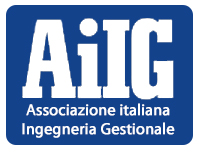Pubblicazioni
Premi e riconoscimenti
Highly Cited Research in Trends in Food Science & Technology, awarded in recognition of the contribution to the quality of the journal made by "Innovation trends in the food industry: the case of functional foods" (paper published in 2013, and cited in 2014/2015 according to data from Scopus)
Barbara Bigliardi
Ordinario di diritto, Università degli Studi di Parma, Ingegneria Industriale
Associato
Socio dal 2004
